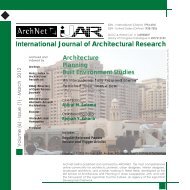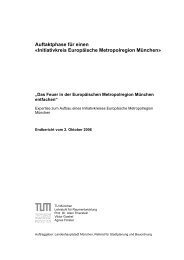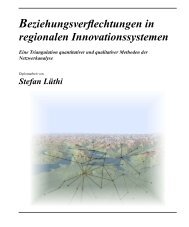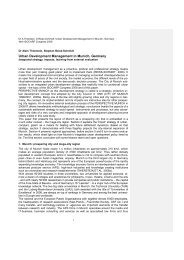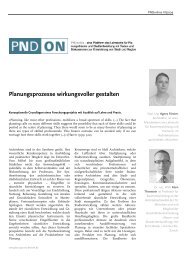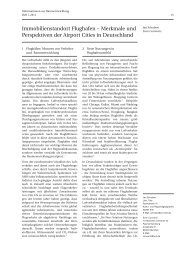Airports in Cities and Regions - KIT Scientific Publishing
Airports in Cities and Regions - KIT Scientific Publishing
Airports in Cities and Regions - KIT Scientific Publishing
You also want an ePaper? Increase the reach of your titles
YUMPU automatically turns print PDFs into web optimized ePapers that Google loves.
Forecast<strong>in</strong>g night flight movements<br />
at airports<br />
A methodological approach<br />
Christian Blank <strong>and</strong> T<strong>in</strong>a Wagner<br />
Air traffic forecasts are a crucial part of the approval procedures for airport<br />
extensions. Opponents often contest them, ma<strong>in</strong>ly because no different development<br />
scenarios are considered. The recent airport extension procedures <strong>in</strong> Germany<br />
revealed a grow<strong>in</strong>g concern over health impacts of flights dur<strong>in</strong>g night time. This is<br />
reflected <strong>in</strong> a trend towards night flight restrictions at airports between 10 pm <strong>and</strong> 6<br />
am. In this context a methodology for the estimation of future night flight<br />
movements at a specific airport has been developed. It builds on a detailed analysis<br />
of past <strong>and</strong> current patterns of night activities <strong>in</strong> relevant air traffic segments (such<br />
as cargo, mail, charter, low cost or long-haul routes) <strong>and</strong> on the general air traffic<br />
forecast.<br />
1 Introduction<br />
In case of airport extensions <strong>in</strong> Germany the state departments are responsible for<br />
the statutory approval-procedures. These procedures always conta<strong>in</strong> an air traffic<br />
forecast, provided by the airports’ operator. The forecast horizon is at least 15 years.<br />
The opponents of airport extensions mostly criticize the forecasts results as well as<br />
its methodology <strong>and</strong> br<strong>in</strong>g it to court. Ma<strong>in</strong> critics are deal<strong>in</strong>g with the fact, that<br />
these forecasts do not consider scenarios of potential developments such as higher<br />
fuel rates. For the approval-procedures only “one” estimation for the total number of<br />
flight movements at the forecast horizon is required. This is ma<strong>in</strong>ly due to the fact<br />
that all impact studies are based on the expected number of flight movements.<br />
Prepar<strong>in</strong>g court hear<strong>in</strong>gs <strong>and</strong> justify<strong>in</strong>g the plann<strong>in</strong>g approval notice, the state<br />
departments often assign an <strong>in</strong>dependent <strong>in</strong>stitute with the quality assurance of<br />
these forecasts. Hav<strong>in</strong>g experience <strong>in</strong> this field we strongly recommend us<strong>in</strong>g the<br />
scenario technique for air traffic forecasts because it leads to a better acceptance of<br />
the forecast itself <strong>and</strong> the plann<strong>in</strong>g procedures. In consequence, the necessity of<br />
further forecasts will be less likely.<br />
43



